TEFAF returns to the MECC in Maastricht from 10–18 March, with 275 exhibitors showing some 35,000 objects across eight sections – Ancient Art, Antiques, Design, Haute Joaillerie, Modern, Paintings, Paper and Tribal. Here is our second instalment of Susan Moore’s picks of the fair – catch up on part one here.
Stacking beaker (c. 1576–91), Christoph Lindenberger
Helga Matzke, in the region of €100,000
This Nuremberg goldsmith seems to have enjoyed success for his impressive but practical cylindrical stacking beakers (note the raised lip, which prevents them from stacking too tightly). Its decoration of scrolling leaves and tendrils derives from the arabesque patterns of Islamic ornament that first found their way into Western decorative arts in 15th-century Italy, and were still to be found in late Northern Renaissance and mannerist works of art.
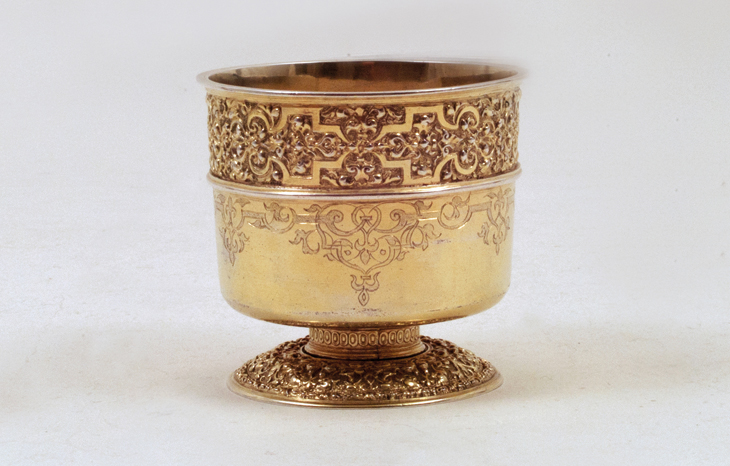
Stacking beaker (c. 1576–91), Christoph Lindenberger.
Eagle Chair (c. 1869), Edward William Godwin
H. Blairman & Sons, £95,000
While Godwin is best known for his Japanese-inspired Aesthetic Movement furniture, his influences were always wildly eclectic. This library chair is part Roman throne, part muscular gothic, and yet the stylised wings on the chair back and the Horus-style bird heads also suggest Egyptian sources. Appropriately enough it was designed for Dromore Castle, County Limerick, for an Irish peer who shared Godwin’s antiquarian interests.
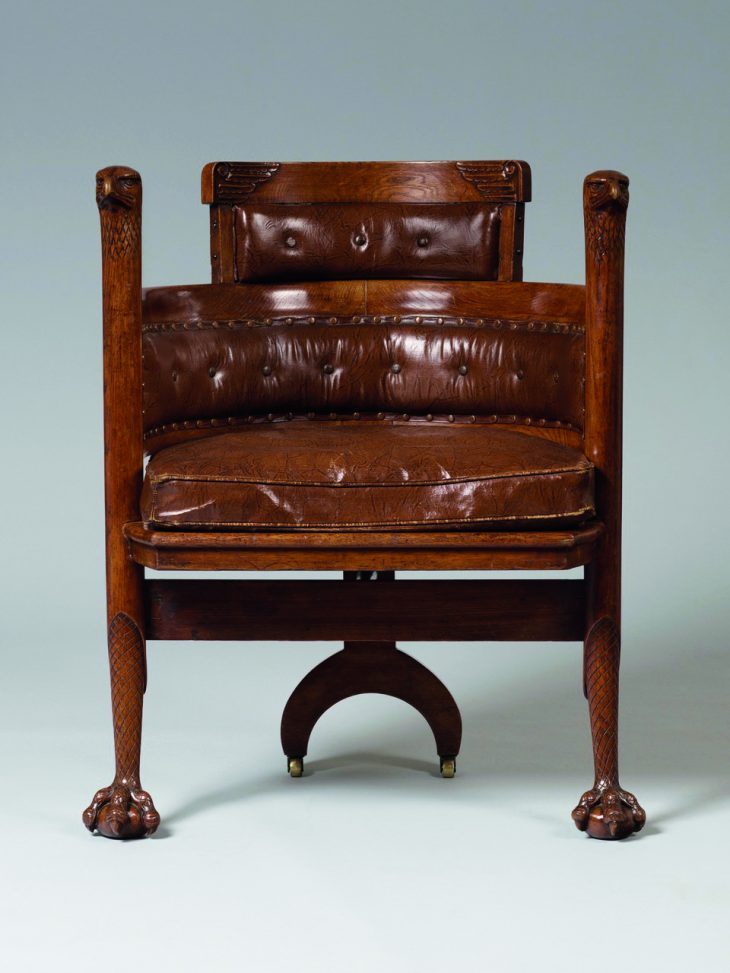
Eagle Chair (c. 1869), Edward William Godwin.
Flowers in a lacquer basket and in a glass vase (c. 1610–20), Osias Beert the Elder
Richard Green, in excess of £500,000
TEFAF Maastricht is unimaginable without Netherlandish still-life painting, of which Beert’s tabletop tour de force is an early example. Little is known about this Ant- werp painter, whose oeuvre was only rediscovered in the 20th century. This panel reflects his penchant for complex flower paintings, of which six are known to survive. For these, a rich diversity of blooms are combined in two, three or even four different containers, and the vessels represented here reappear together in other works, not least the Pausias and Glycera in the Ringling, Florida, on which he collaborated with Rubens. As with nearly all such paintings, the varieties of flowers depicted – all 27 of them – could never have bloomed at the same time, nor would the leaves strewn on the table, or the insects, have flourished with these specimens. Artists often worked on different paintings over several months, or worked from sketches, drawings or prints. While symbolism is never explicit in Beert’s still lifes, the worm-eaten leaves, like the fallen petals, may imply a vanitas theme, and the butterfly and dragonfly could symbolise the liberated soul which, after a virtuous life, rises to heaven.
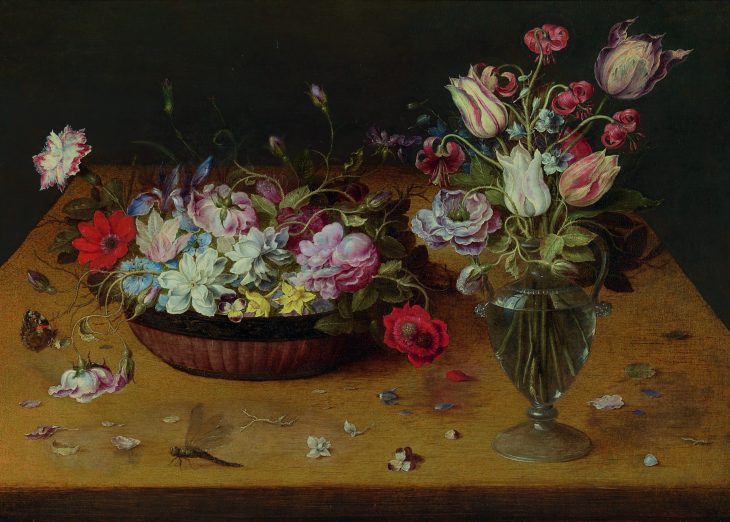
Flowers in a lacquer basket and in a glass vase (c. 1610–20), Osias Beert the Elder.
Mountain Landscape (c. 1625–30), Hercules Segers
Dickinson, price on request
Segers has been described as the most inspired, experi- mental and original landscapist of his generation – Rembrandt owned no fewer than eight of his paintings. Included in Segers’ recent retrospective at the Rijksmuseum and the Met, this rediscovered panel is typical among his rare surviving works for its wide and sweeping horizontal view and atmospheric mountainous scenery, which seems to owe more to the Flemish than the Dutch tradition.
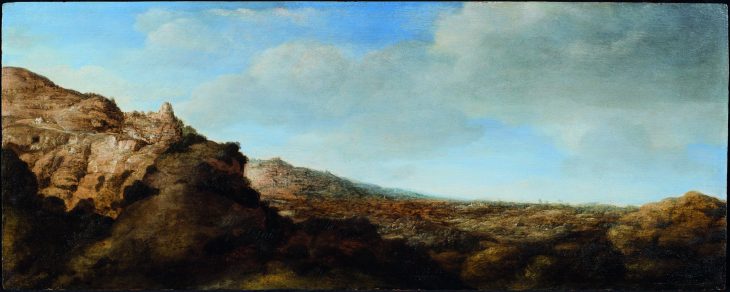
Mountain Landscape (c.1625–30), Hercules Segers.
Shrine piece and dance headdress (c. 1850–1900), Baga, Nalu or Landuma people, Guinea, or Guinea-Bissau
Bernard de Grunne, price on request
For the Baga, these bird sculptures with very long beaks and a shiny oily patina were worshipped in shrines as symbols of the clan ancestor and sometimes worn in dances at the end of initiation ceremonies. Among the neighbouring Nalu, they represent the water spirit. This example, which belonged to Charles Ratton in the 1960s, is unusual in having a second, human, head.
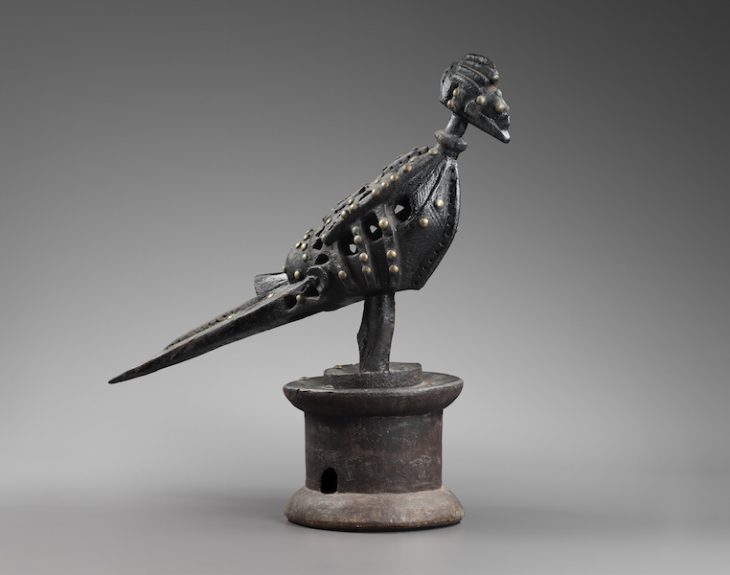
Shrine piece and dance headdress (c. 1850–1900), Baga, Nalu or Landuma people, Guinea, or Guinea-Bisseau.
Atelier I (1950), Alberto Giacometti
Thomas Gibson, in the region of $5m
Giacometti once quipped that only Francis Bacon had a messier studio than he did. This canvas belongs to a group of paintings, drawings and lithographs that the artist made between 1950 and 1954, which reveal the clutter of the assorted mass of sculptures, discarded paintings, empty bottles, armatures, stretcher bars and wooden stools that crowded his cramped, unprepossessing refuge and workplace on the rue Hippolyte-Maindron in Paris. The ashen and tobacco-hued palette here even suggests the plaster dust and cigarette butts strewn across the floor. These studio paintings are, however, less interiors than interior landscapes in that they offer a mirror to the artist’s ever-anxious mind. Certainly, the bust of his brother Diego placed on the stool exudes a frightening intensity in its dark-eyed and characteristically compressed craggy features. In its grid-bound confinement, this image of an image attests to the scrutiny and rigour of the artist’s vision as he sought to extract the very essence of his subjects. Even colour has been pared down to remnants and near monochrome. As he is quoted as saying: ‘One colour after the other dropped out, and what remained? Grey! Grey! Grey!’
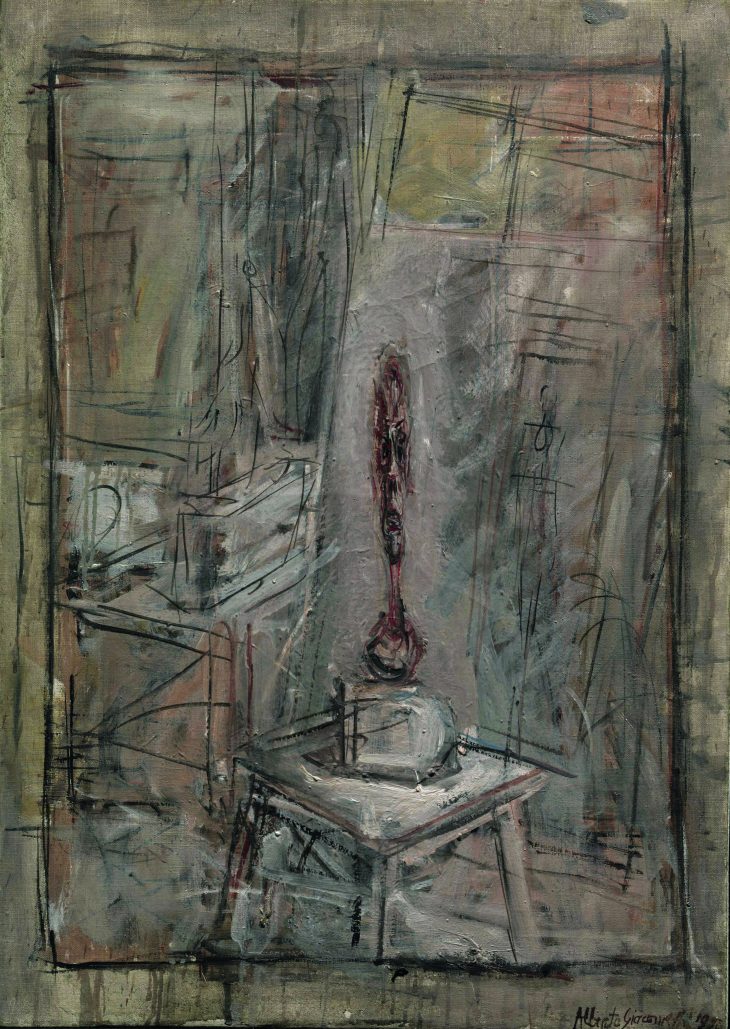
Atelier I (1950), Alberto Giacometti.
Study of a Lion at Rest (c. 1820–21), Théodore Géricault
Stephen Ongpin Fine Art, £65,000
Despite its small scale, this bravura drawing suggests not only the generic power and presence of this mighty beast but also its particularity. Géricault seems always to have been interested in these savage, noble creatures and this study was probably made from life at London Zoo during his stay in the city in 1820–21. This sketch, finished with bold, broad washes of watercolour, illustrates as well as any drawing of a human subject the artist’s powers of physiognomic observation.
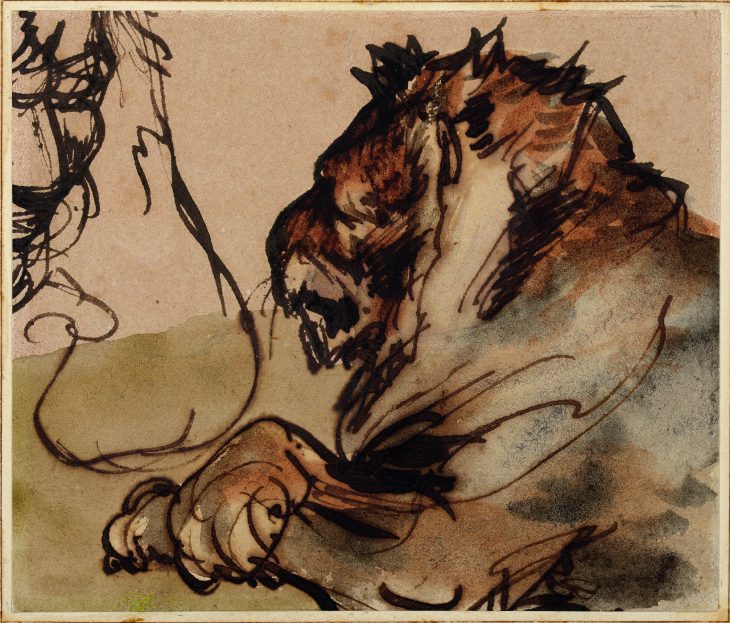
Study of a Lion at Rest (c. 1820–21), Théodore Géricault.
Unlimited access from just $16 every 3 months
Subscribe to get unlimited and exclusive access to the top art stories, interviews and exhibition reviews.














![Masterpiece [Re]discovery 2022. Photo: Ben Fisher Photography, courtesy of Masterpiece London](http://zephr.apollo-magazine.com/wp-content/uploads/2022/07/MPL2022_4263.jpg)
The threat to Sudan’s cultural heritage